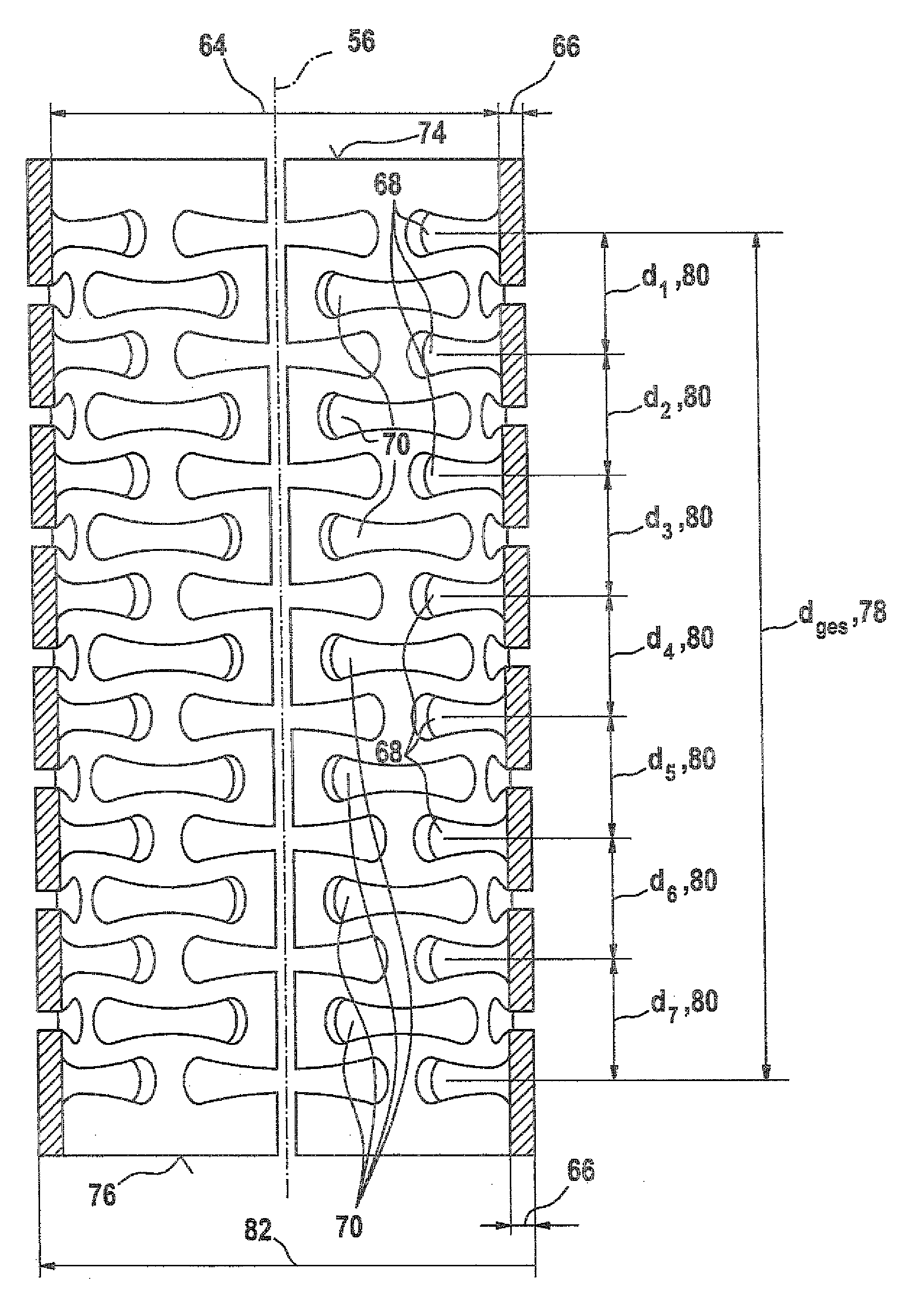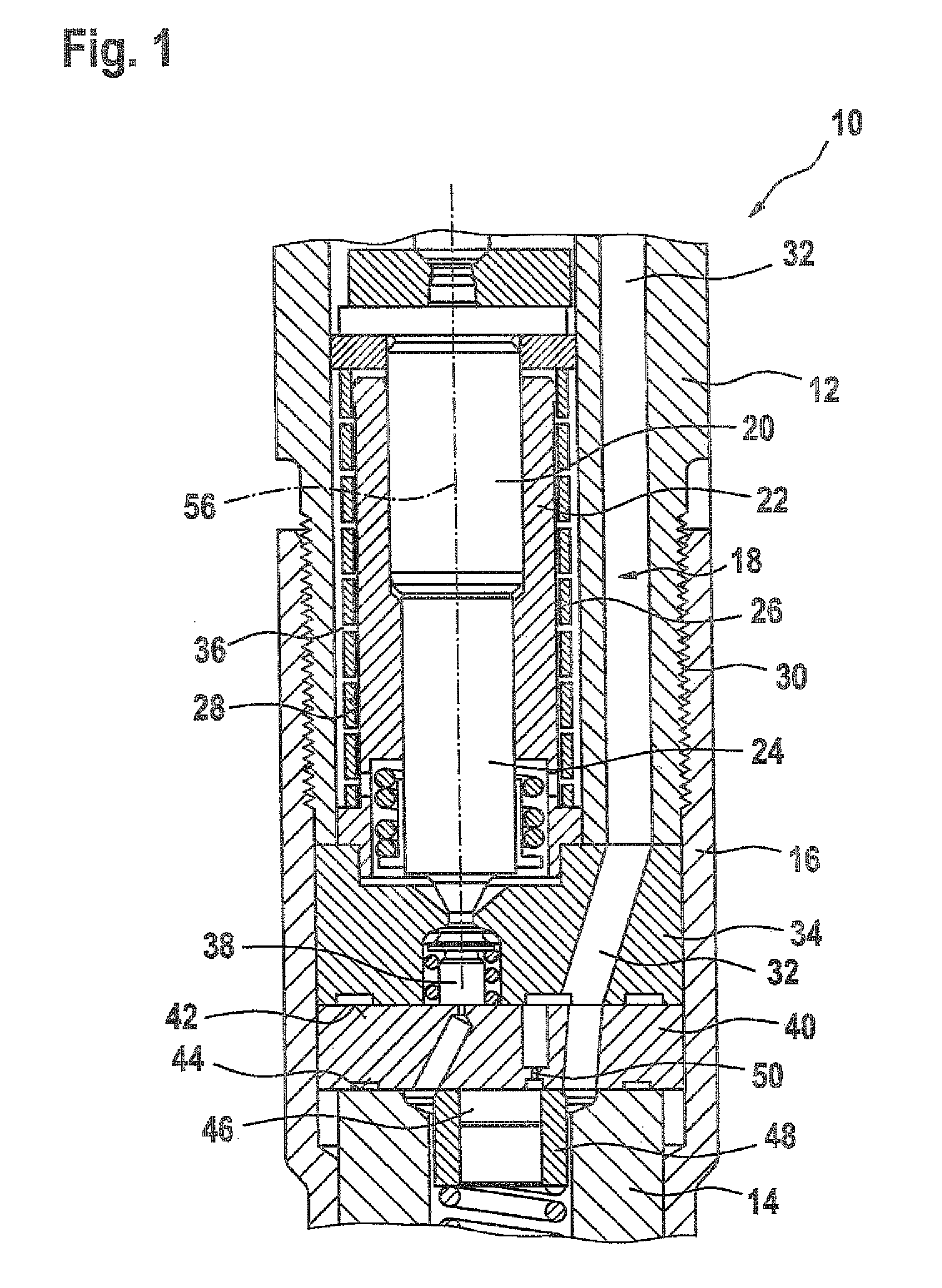Spring sleeve for fuel injector
a fuel injector and spring sleeve technology, which is applied in the direction of ring springs, combustion types, lighting and heating apparatus, etc., can solve the problems of undesirable leakage at the thread, complex production of threads on the inside of the nozzle clamping nut and on the outer circumference surface of the holding body, etc., to increase the ruggedness of the spring sleeve, the effect of increasing the local stress
- Summary
- Abstract
- Description
- Claims
- Application Information
AI Technical Summary
Benefits of technology
Problems solved by technology
Method used
Image
Examples
Embodiment Construction
[0027]FIG. 1 shows a section through a fuel injector according to the prior art, which includes a coupler module.
[0028]FIG. 1 shows a fuel injector 10 that includes a holding body 12 and a nozzle body 14. The holding body 12 and the nozzle body14 are connected to each other via a nozzle clamping nut 16. The holding body 12 has a cavity 36 in which a coupler module 18 is accommodated.
[0029]The coupler module 18 includes a coupler piston 20 and a coupler body 22. The coupler body 22 encompasses both the coupler piston 20 and a piston 24 on which the coupler piston 20 acts. A circumference surface 28 of the coupler body 22 is encompassed by a spring sleeve 26.
[0030]It is clear from the sectional depiction according to FIG. 1 that the holding body 12 and the nozzle body 14 are connected to each other at a screw connection 30, with the interposition of a valve plate 34 and the throttle plate 40. An inlet 32 extends through the holding body 12, the valve plate 34, and the throttle plate 4...
PUM
 Login to View More
Login to View More Abstract
Description
Claims
Application Information
 Login to View More
Login to View More - R&D
- Intellectual Property
- Life Sciences
- Materials
- Tech Scout
- Unparalleled Data Quality
- Higher Quality Content
- 60% Fewer Hallucinations
Browse by: Latest US Patents, China's latest patents, Technical Efficacy Thesaurus, Application Domain, Technology Topic, Popular Technical Reports.
© 2025 PatSnap. All rights reserved.Legal|Privacy policy|Modern Slavery Act Transparency Statement|Sitemap|About US| Contact US: help@patsnap.com



